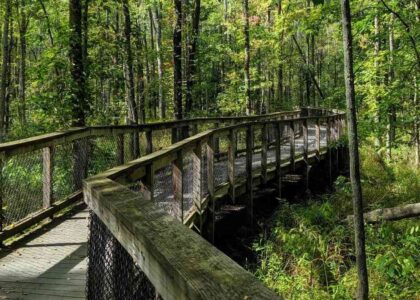Welcome to the Halifax Citadel National Historic Site. Perched on Citadel Hill, this star-shaped fortress has been a silent guardian over the city of Halifax for centuries. Its story begins in 1749, when the British military recognized the strategic importance of a large hill overlooking a natural, easily defended harbor. This location was ideal for a military stronghold, and so the town of Halifax was born, with its first settlers building their homes at the base of this hill.
The Citadel you see today, officially named Fort George after King George II, is actually the fourth fortification to occupy this spot, completed in 1856. Its distinctive star shape, typical of British military architecture from the 19th century, offered defenders sweeping arcs of fire, with muskets and cannons positioned to cover every approach. It’s no wonder that no enemy force ever dared to attack Halifax Citadel directly.
Throughout its history, the Citadel has been a pivotal part of Halifax’s defense and a reflection of its growth. During the American Revolution and the War of 1812, it served as a formidable deterrent against potential American attacks. The fort also played a role during the Crimean War, when Halifax was a bustling hub of military activity, and later during both World Wars, when it served as a vital point in the defense of the North Atlantic.
The Citadel’s story is brought to vibrant life by the costumed interpreters you might see today, representing the 78th Highlanders and the Royal Artillery. These living history actors recreate the daily life of 19th-century soldiers, complete with marching drills and musket demonstrations.
Every day since 1857, the noon gun has been fired from the Citadel’s ramparts by the 3rd Brigade Royal Artillery, a tradition that continues to this day and can be heard across the city. This daily ritual is one of the oldest in the world and serves as a reminder of the Citadel’s enduring presence in Halifax’s rhythm of life.
Among the notable figures associated with the Citadel, one stands out: Major General William Fenwick Williams, a Nova Scotian who became famous for his defense of Kars during the Crimean War. His legacy is intertwined with the Citadel’s history, as his leadership and military acumen were celebrated throughout the British Empire.
Today, the Citadel is a place where history comes alive. It’s more than just a museum—it’s an experience. Visitors can explore the Army Museum, which tells the powerful stories of Nova Scotian soldiers, and participate in guided tours that delve deep into the fortress’s past. For the brave at heart, ghost tours offer a thrilling exploration of the fort’s haunted history.
The Citadel also plays host to a variety of events throughout the year. Whether you’re here for the changing of the sentry, a reenactment, or just a picnic on the ramparts, the Citadel offers a unique glimpse into the past while providing spectacular views of modern-day Halifax.
As you leave this historic site, consider the layers of history that have unfolded here—stories of soldiers and settlers, of peace and war, and of a city that grew around a fortress. The Halifax Citadel is a testament to the resilience and strategic importance of Halifax, marking its place in Canada’s rich tapestry of history.




